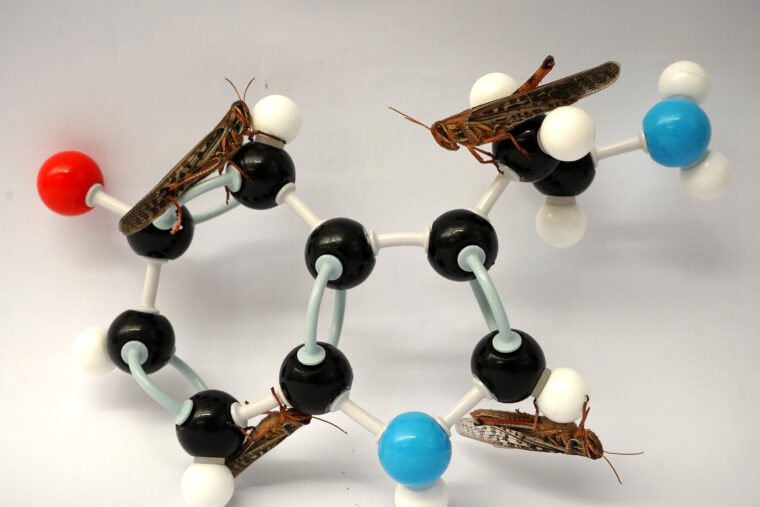
Researchers at Washington University in St. Louis have spent the better part of the decade studying the ins and outs of how locusts smell, including how odors affect the insect's behavior.
In research recently published in eLife, Barani Raman, a professor of biomedical engineering at the McKelvey School of Engineering, starts to map out just how olfactory circuits are altered in driving different behavior in locusts. Neuromodulator serotonin is a key factor in that behavior including how locusts can go from being a "loner" to "gregarious" - otherwise known as swarming phase.
"The same organism can exist in two different states - one is destructive, and one is shy and introverted," Raman said.
Raman and PhD student Yelyzaveta Bessonova wanted to investigate how serotonin affects the part of the neural circuit in the locust brain that senses olfactory cues and drives appropriate behavioral responses. The more researchers understand how sensory signals are processed, the easier it will be to control and prevent locusts from swarming. From an engineering point of view, understanding this biological system can inspire solutions for odor detection in dangerous and toxic environments.
To understand how the same odor can trigger different behavior, imagine how the smell of freshly baked cookies might drive a quest to the kitchen when someone is hungry. But, after consumption of a few cookies, that same smell might be ignored or even induce disgust, Raman said.
In both cases the same sensory stimuli, the smell of the cookie, drives different behavioral responses depending on if hungry or full.
In modeling this same mechanism in locusts, they can't exactly ask it if it's hungry, so researchers look for the appetitive response (imagine salivating in dogs) in which the sensory appendages near the locust's mouth open.

"It is more of a preparatory response that happens before locusts grab and eat their blade of grass," Bessonova said.
They found increases in serotonin altered the amplitude of neural responses, but the timing of the response did not change. Increases in neural response they observed to all odors was at odds with the specificity they observed in behavioral responses to the same set of smells. To resolve this, they came up with a simple computational model. The model essentially split neurons into two subgroups: one to increase behavioral output and the other to reduce the same behavior.
Through this model, they were able to account for how the insect's neural response increased behavioral response to food-related odors and continued to ignore non-food smells when injected with serotonin.
"This gave us glimpses of how a neuromodulator can globally affect a neural circuit and yet produce an odor-specific behavior outcome," Raman said.
The current group of locusts they worked with are the "gregarious" type, Raman said.
The next step in the research will be to understand how solitary types of locusts react to similar neuromodulation. They'll see how the loners respond to olfactory cues and how serotonin affects those neural circuits as locusts shift from introvert to extrovert and back again.
Bessonova Y, Raman B. Serotonergic amplification of odor-evoked neural responses maps onto flexible behavioral outcomes. eLife 12: RP91890. Funding for this research was provided by the National Science Foundation (2021795).
DOI: https://doi.org/10.7554/eLife.91890.3






